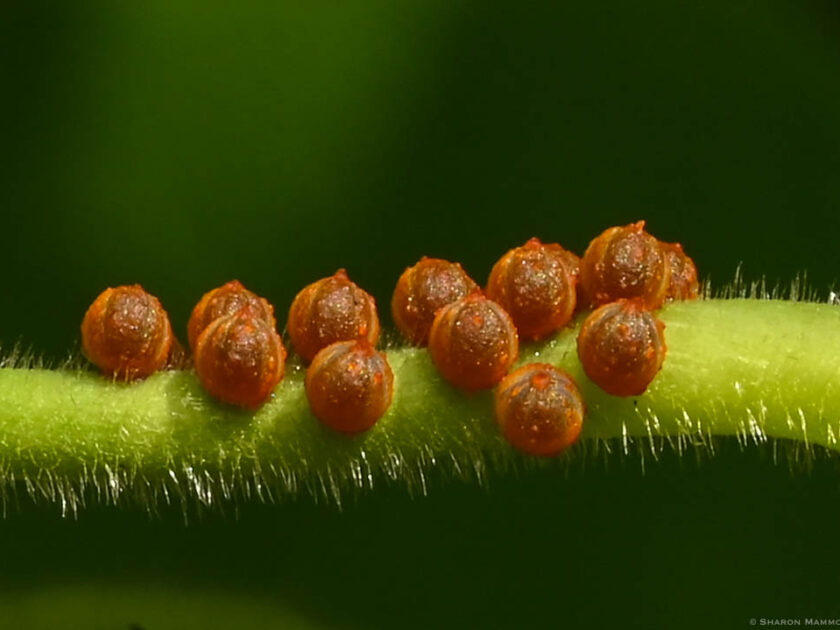The tiny orange dots along the stem of Pipevine are Pipevine Swallowtail butterfly eggs. Female butterflies usually lay the eggs in small groups on the vines, rather than the leaves. The caterpillars that hatch out can often be seen feeding together on the same leaves, or in the same areas.
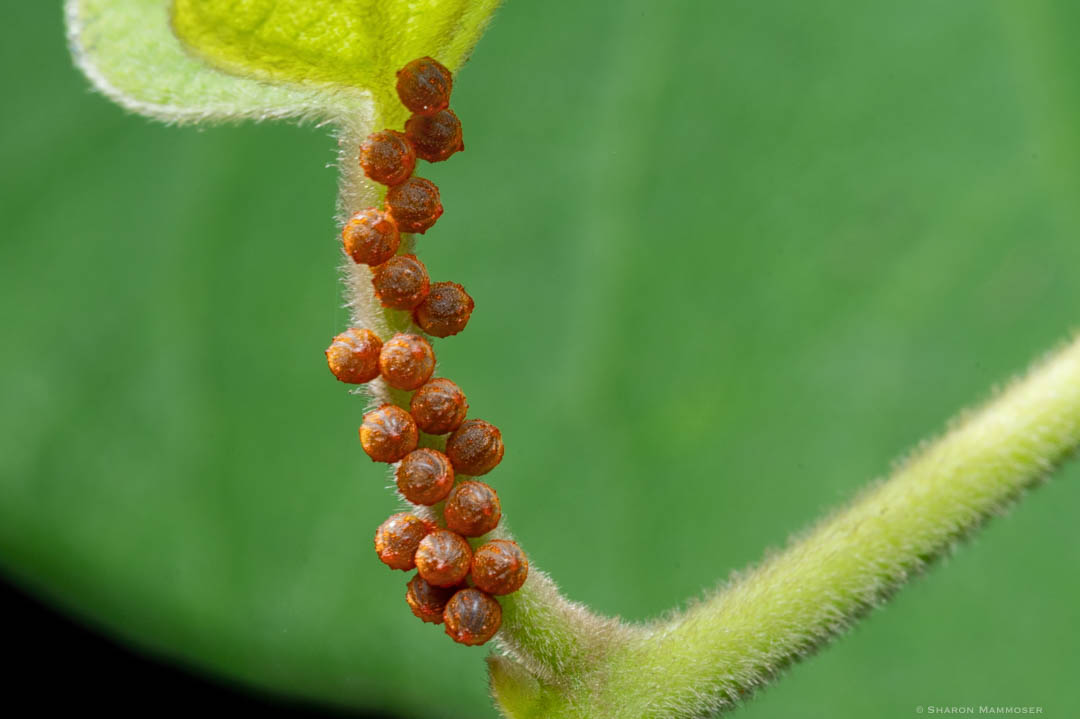


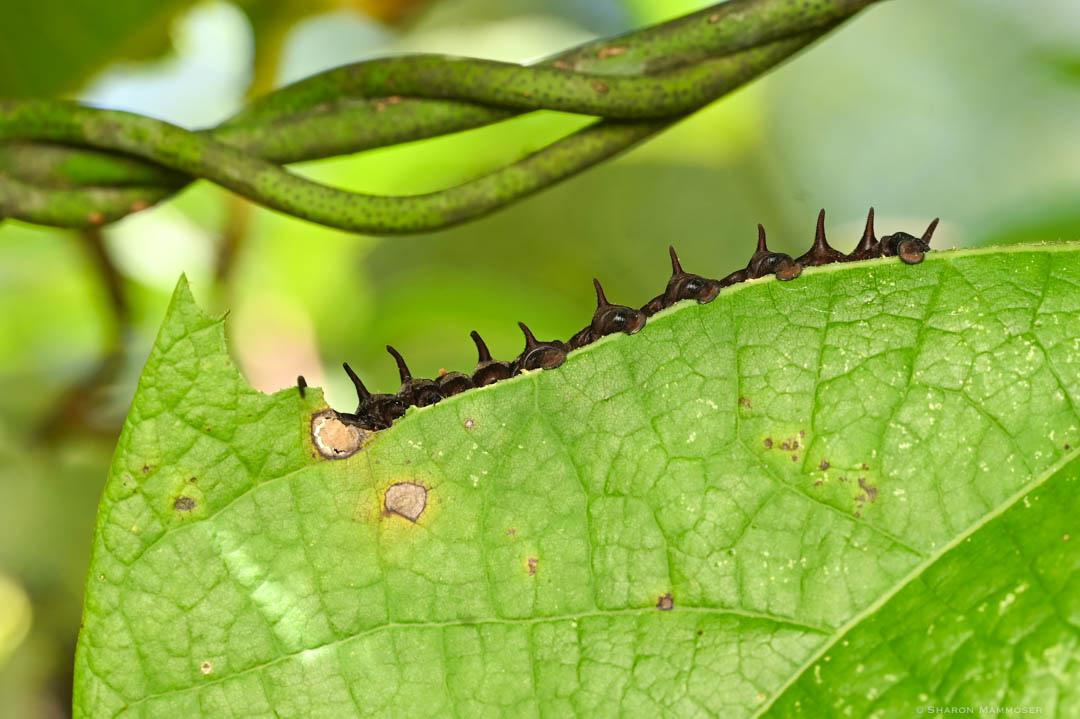

If you were able to look at these eggs under a microscope, you would see that along the sides of the eggs, there are uneven dots, or ridges, making them look bumpy. Interestingly, these are left by the females through a duct special for this purpose, located above the female’s ovipositor duct. The hard, nutritious secretions are laid down in vertical bands on the sides of the eggs.
Caterpillars hatch out after a few weeks and like many other caterpillars, feed on the remains of the nourishing egg shell. Then they’ll move on to eating the leaves of the Pipevine.
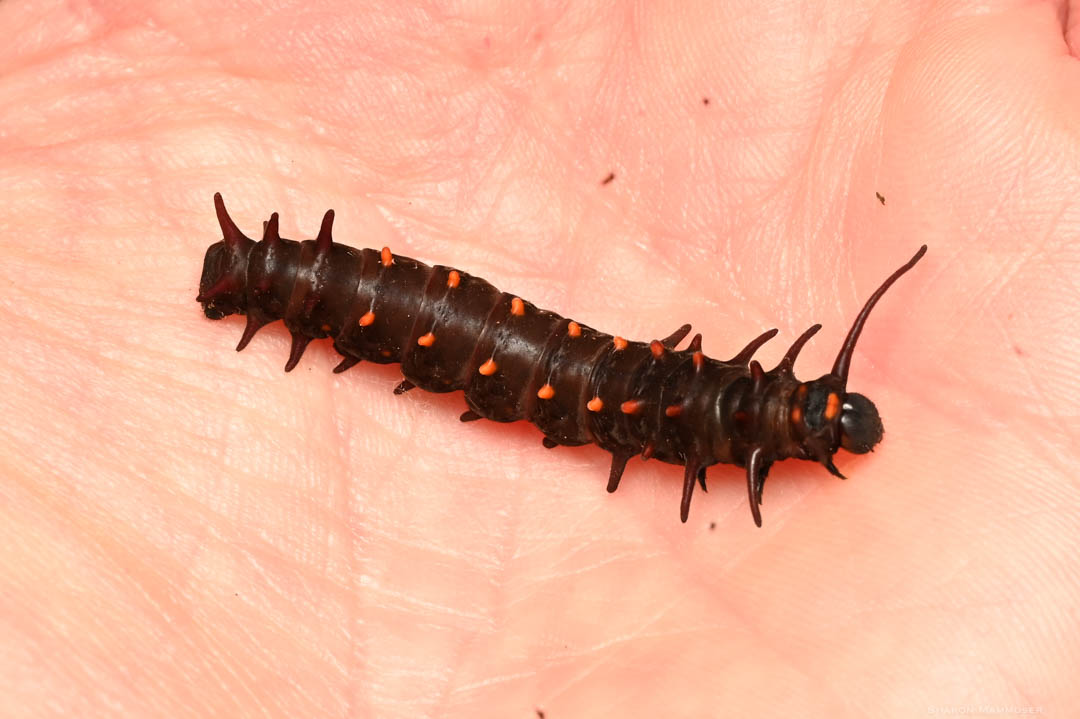
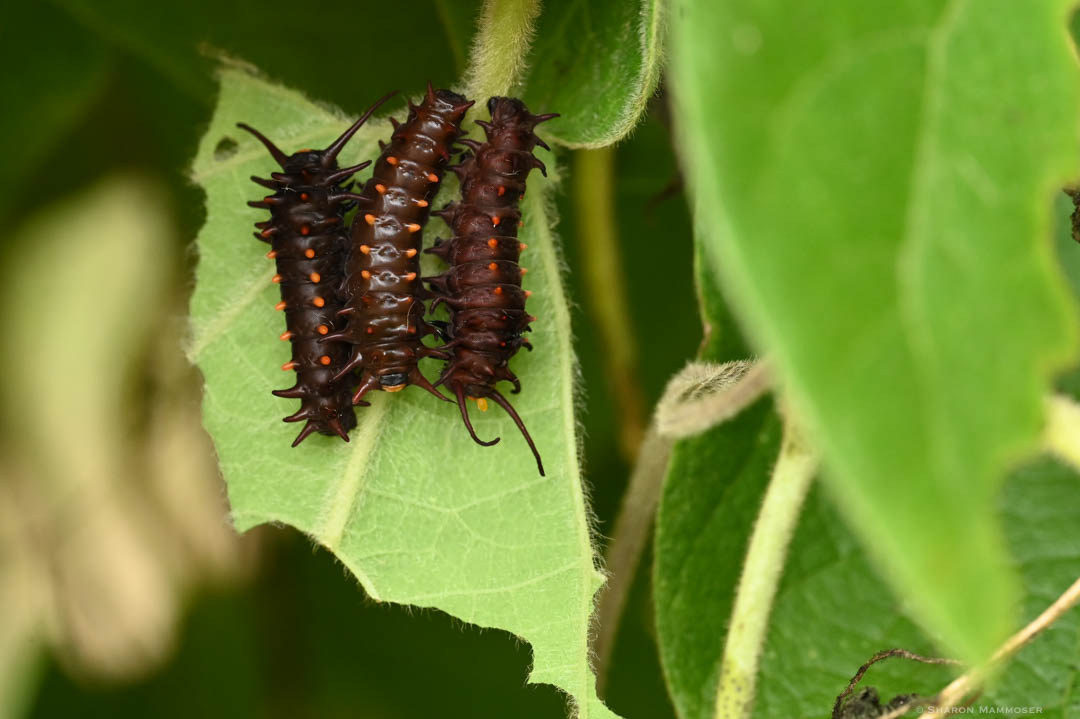
You may know already that this butterfly is the reason several other species of butterflies are dark and similar looking. Those are mimics of the pipevine swallowtail. Know why? Because the leaves of the Aristolochia/Pipevine contain acids that are poisonous when consumed. Birds and other prey quickly learn to avoid these butterflies! These mimics are the dark form of the eastern tiger swallowtail, the black swallowtail, the red-spotted purple, and even the female Diana fritillary.

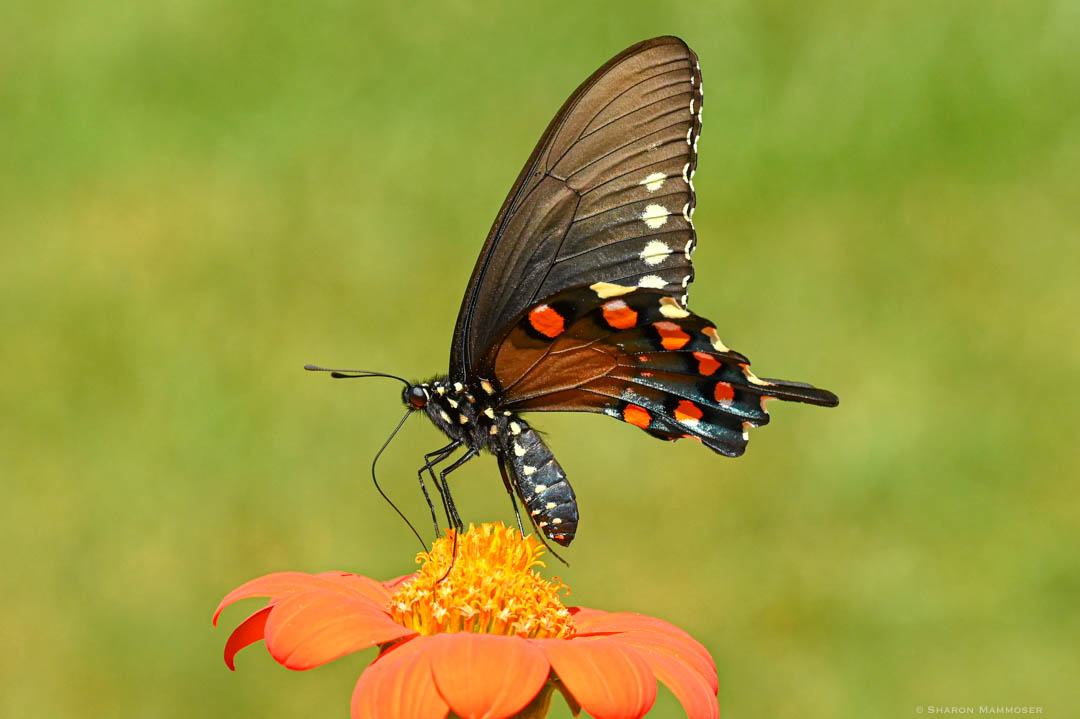
I did a post on how to tell these confusing butterflies apart some time ago.


